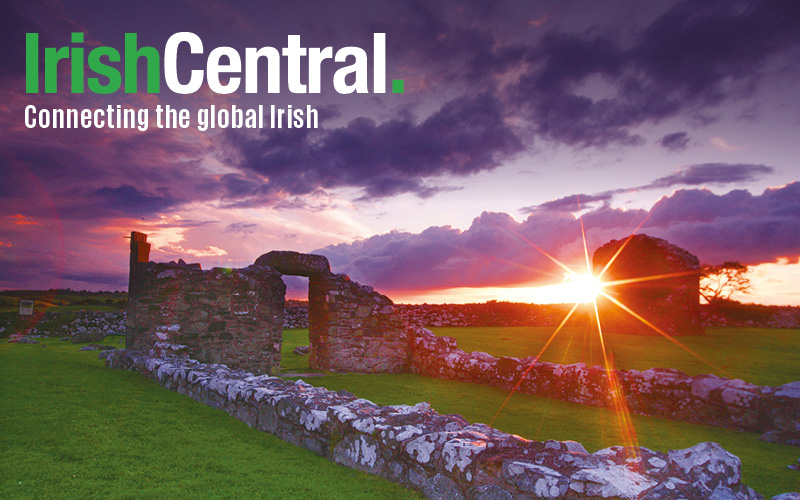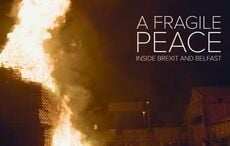In 2014, Irish Voice columnist Cahir O'Doherty visited the then newly-opened 9/11 Museum in New York City. Below, he shares his experience and questions why Ireland does not have a similar museum for The Troubles.
Controversy has dogged almost every step of Manhattan’s new 9/11 Museum. From its inception to its arrival this week it has been loudly criticized and even condemned by some 9/11 victims' families groups and by the tabloid press.
Some of this condemnation is pure politics. Murdoch-owned publications like The New York Post clearly do not want to hand the progressive new mayor Bill de Blasio a major public relations win in the first few months of his stewardship.
Some of this condemnation is heartfelt. Many relatives feel the location of the 9/11 Museum is a sacred space that should never have been disturbed. They also object to the $24.00 ticket price and the sale of tourist items to defray the museum's operating costs.
But what got a little lost in all the back and forth recently is how solemn and serious the museum actually is. Having visited it this week I can say with certainty that it delivers an enlightening and unforgettable experience for everyone who actually visits it.
Read More: Remembering the Irish Americans we lost in the 9/11 attacks
I was astonished by the scale and solemnity of the new museum, and I was moved by the thoughtfulness of its layout and intent. It provides the visitor with a comprehensive overview of the building and function of the twin towers, it discusses their instantly iconic position on the New York skyline and in popular culture, and it reminds us what a rich psychological target the towers made for the anvil-brained fundamentalists who hate us.
You should plan an entire day for your visit because there is so much to see and reflect upon. Irish names are everywhere, from the engineers, to the cops, firemen, rescue workers and victims. In fact, Irish names are disproportionally present, which has the effect of making the visit especially traumatic at times.
I suggest you really take your time and read each plaque, attend each short screening and record your own memories of the day in the special recording studio they have placed at the end of the tour. You probably have a 9/11 story of your own.
I say this because I think that one visit to the 9/11 Museum may be enough for a lifetime. Emotionally it falls with the force of a collapsing mountain. You might want to make plans for a quiet night afterward.
Walking through it you will come – without warning – to a vast room that is comprised of thousands of color photographs of the victims: the smiling faces of men, women and children, all frozen in time.
Hailing from the North of Ireland, I found this moment especially unsettling. In one morning on September 11, 2001, almost three thousand people died. Involuntarily I recalled that in Ireland three thousand, six hundred had died over three decades of the Troubles.
The new 9/11 Museum may prolong a raw wound in some, but it also performs a valuable healing service to the war-weary nation. Who can say which route will lead to a deeper understanding?
Read More: Calls growing to canonize LGBT hero Father Mychal Judge, ‘Saint of 9/11’
The success of the new museum, and it is an unqualified success, is that it gives you a sense of the enormous scale of the destruction and the devastating loss that was experienced not just by New York or the nation, but also by humankind.
In Ireland, we are at a juncture in our own history that also seems to call for deep reflection over the current direction of our nation. It took Ireland 150 years to even begin to contend with the psychological and spiritual wounds of the Great Hunger.
The ceasefire that transformed the North has held, more or less, since 1994. Yet where are Ireland’s great national museums exclusively dedicated to the Great Hunger or the Troubles?
Would it not be appropriate now to reflect on the trauma and lessons of the two transformative events? Wouldn’t an engaged examination of these two significant turning points in the history of our nation be worthwhile? They’re our own twin towers, after all.
In Ireland, we have learned to dread the way that the past can dictate the present. But the mistake we make is to imagine that past traumas can only inspire new ones.
The 9/11 Museum has succeeded because it has shown us that, although unspeakable, life-altering disasters can befall us, we can confront them and their many lessons too. We can learn, we can get up, we can move on – damaged, altered, even transformed, but still standing. The Irish know this lesson in their bones. It’s time for two national museums that tell these stories.
*Originally published in 2014




Comments